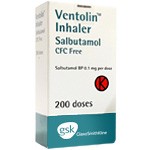Living with Emphysema


Lung emphysema is a serious, progressive respiratory condition that affects millions of people worldwide, primarily those with a history of smoking or prolonged exposure to environmental pollutants. Classified under the umbrella term of chronic obstructive pulmonary disease (COPD), emphysema significantly impairs lung function, gradually robbing individuals of their ability to breathe freely. This article explores what emphysema is, how it progresses, what treatment options exist, and how medications like Albuterol inhalers can help alleviate its burdensome symptoms.
What Is Emphysema of the Lungs?
Emphysema is a chronic pulmonary condition in which the air sacs (alveoli) in the lungs become damaged and lose their elasticity. These tiny sacs are essential for the exchange of oxygen and carbon dioxide during breathing. In healthy lungs, the alveoli expand and contract efficiently with each breath. In emphysema, the walls between the alveoli are gradually destroyed, creating larger but fewer air spaces that are less efficient at gas exchange.
This structural damage leads to trapped air within the lungs, reducing airflow and making it difficult to fully exhale. Over time, this causes a reduction in oxygen levels in the bloodstream and an overall decrease in respiratory efficiency. The lungs also become hyperinflated, meaning they retain too much air, which contributes to a feeling of breathlessness and reduces the space available for fresh air during each breath.
The most common cause of emphysema is long-term cigarette smoking. Other contributing factors include prolonged exposure to air pollution, industrial dust, or chemical fumes. There is also a rare genetic form of emphysema caused by alpha-1 antitrypsin deficiency, which can affect younger individuals.
What Is Stage 4 Emphysema?
Emphysema is typically staged based on the Global Initiative for Chronic Obstructive Lung Disease (GOLD) classification, which uses spirometry to measure lung function—specifically, the forced expiratory volume in one second (FEV₁). Stage 4 emphysema is the most severe form and is often referred to as "very severe COPD."
In stage 4, lung function is severely compromised, with FEV₁ measurements falling below 30% of the predicted value. This stage is marked by severe shortness of breath even at rest, frequent exacerbations, reduced physical capacity, and a high risk of complications such as respiratory failure or heart problems due to chronic hypoxia.
People with stage 4 emphysema may experience a persistent cough, chronic mucus production, wheezing, and significant fatigue. Daily activities such as walking short distances, climbing stairs, or even getting dressed can become incredibly challenging. In this advanced stage, patients often require supplemental oxygen and may be considered for palliative care or lung transplantation evaluation.
Can Lungs Recover from Emphysema?
Unfortunately, the structural damage caused by emphysema is irreversible. Once the alveoli are destroyed, they do not regenerate. However, this does not mean that treatment is ineffective or that the disease cannot be managed. While full recovery is not possible, a combination of lifestyle changes, medications, and pulmonary rehabilitation can significantly slow disease progression, improve breathing, and enhance quality of life.
The first and most critical step in management is eliminating the source of lung damage — most commonly by quitting smoking. This halts the progression of lung destruction and allows the remaining lung tissue to function more effectively. Avoiding exposure to secondhand smoke, occupational pollutants, and allergens also helps minimize further damage.
Pulmonary rehabilitation programs are another cornerstone of emphysema care. These programs combine supervised exercise, breathing techniques, nutrition counseling, and psychological support to optimize lung function and energy levels. Although the lungs won’t physically heal, patients often experience improved endurance and less shortness of breath with daily activities.
Medical therapy, particularly the use of bronchodilators, anti-inflammatory medications, and oxygen therapy, plays a key role in symptom control and reducing the frequency of flare-ups. With a comprehensive approach, many individuals with emphysema are able to stabilize their condition and live active, meaningful lives.
How Long Can You Live with Emphysema?
The life expectancy for someone with emphysema varies widely depending on several factors, including the stage at diagnosis, age, overall health, smoking status, and how well the condition is managed. In general, early-stage emphysema does not significantly reduce life expectancy if the person quits smoking and follows an effective treatment plan. Some people with mild to moderate disease may live for decades after diagnosis with minimal lifestyle limitations.
In contrast, advanced stages of emphysema, especially stage 4, carry a poorer prognosis. On average, life expectancy for stage 4 emphysema can range from a few years to over five years, depending on comorbid conditions and treatment adherence. Regular follow-up, nutritional support, respiratory therapy, and use of supplemental oxygen when needed can all extend survival and improve quality of life.
It is important to note that emphysema is a highly individual disease, and no single prognosis applies to everyone. Tools such as the BODE index—which takes into account body mass index, airflow obstruction, dyspnea (breathlessness), and exercise capacity—are often used to help predict survival and guide treatment planning more accurately.
Despite the chronic nature of emphysema, ongoing medical advancements and patient education are making it possible for people to manage the disease more effectively than ever before.
The Role of Albuterol Inhaler in the Treatment of Emphysema
One of the most commonly prescribed medications for emphysema is the Albuterol inhaler, a short-acting beta-2 agonist (SABA) that provides rapid relief of bronchospasm. Bronchospasm is the tightening of the muscles around the airways, which further narrows the already compromised air passages in people with emphysema. Albuterol works by relaxing these muscles, allowing the airways to open up and improving airflow almost immediately.
The effects of Albuterol typically begin within minutes and can last for 4 to 6 hours. This makes it particularly useful during acute episodes of shortness of breath or wheezing. For many individuals with emphysema, Albuterol is used on an as-needed basis for quick relief, especially before physical activity or during symptom flare-ups.
Inhaled directly into the lungs via a metered-dose inhaler or nebulizer, Albuterol acts locally with minimal systemic absorption. This targeted delivery enhances its effectiveness and reduces the likelihood of systemic side effects. Common side effects may include a fast heartbeat, jitteriness, headache, or muscle cramps, but these are generally mild and transient.
Albuterol is often part of a larger treatment regimen that may include long-acting bronchodilators (LABAs), inhaled corticosteroids, and anticholinergic agents, all of which help manage chronic symptoms and prevent exacerbations. For people with more advanced emphysema, these medications are often combined for maximum effectiveness.
Although Albuterol does not reverse the damage caused by emphysema, its ability to rapidly open the airways provides invaluable symptom relief and can prevent complications associated with reduced oxygen levels and respiratory distress.
Importantly, patients are encouraged to learn how and when to use their Albuterol inhaler properly. Overuse can lead to reduced effectiveness and an increased risk of side effects.Therefore, proper education on inhaler technique and dosage is essential for achieving the best outcomes.
Conclusion
Emphysema is a debilitating yet manageable lung condition that demands a proactive, lifelong commitment to health. While it cannot be cured, early intervention, smoking cessation, appropriate medical therapy, and pulmonary rehabilitation can significantly improve both quality and length of life.
Stage 4 emphysema represents the most severe form of the disease and often involves substantial disability, but even in its later stages, symptom relief and comfort can be achieved through well-structured care. Understanding the nature of the disease and the role of tools like the Albuterol inhaler empowers patients to take control of their condition and live more fulfilling lives.
Ongoing research and innovation continue to improve the landscape of emphysema care. With vigilant management, strong support systems, and access to modern respiratory therapies, individuals with emphysema can find ways to breathe easier and reclaim their daily independence.
Medically Reviewed by Dr. Rabeea Aboufakher, MD
(Updated at Jun 30 / 2025)

